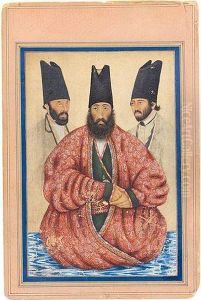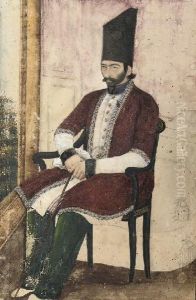Abu'L Hasan Ghaffari Paintings
Abu'l Hasan Ghaffari, also known as Sani' ol Molk, was a celebrated Iranian painter and a significant figure in the Qajar era art scene. Born in 1814 in Iran, Ghaffari hailed from a family with a strong artistic lineage, which played a crucial role in nurturing his talents from a young age. His uncle, Mohammad Ghaffari, known as Mirza Baba Shirazi, was the royal painter for Fath-Ali Shah Qajar, which provided Abu'l Hasan with an environment steeped in the arts and introduced him to the courtly style of painting.
Ghaffari's skills and contributions to the arts were extensive. He is widely acclaimed for his mastery in traditional Persian miniature painting, an art form characterized by intricate detail, vivid colors, and elaborate compositions. However, Ghaffari was also instrumental in introducing European styles and techniques to Persian art. He was sent by the court to Italy to study the works of the Renaissance masters, and upon his return, he helped to establish the Dar ul-Funun, the first modern institution of higher learning in Iran, where he taught painting.
His works often included portraits of Qajar royals and nobility, but he also painted other subjects such as religious figures and everyday scenes. His style represented a blend of Persian and European influences, which was innovative at the time and set a precedent for future generations of Iranian artists.
Ghaffari was not just a painter but also an art administrator. He played a pivotal role in the cultural life of his time by organizing and curating art exhibitions. His contributions to the development of modern art education in Iran are particularly noteworthy, as they laid the groundwork for subsequent art movements within the country.
Abu'l Hasan Ghaffari's legacy extends beyond his death in 1866. He left behind a body of work that continues to be celebrated for its beauty and historical significance. As an art historian and a visionary, his influence persisted beyond the Qajar era, shaping the trajectory of Iranian art for years to come.

